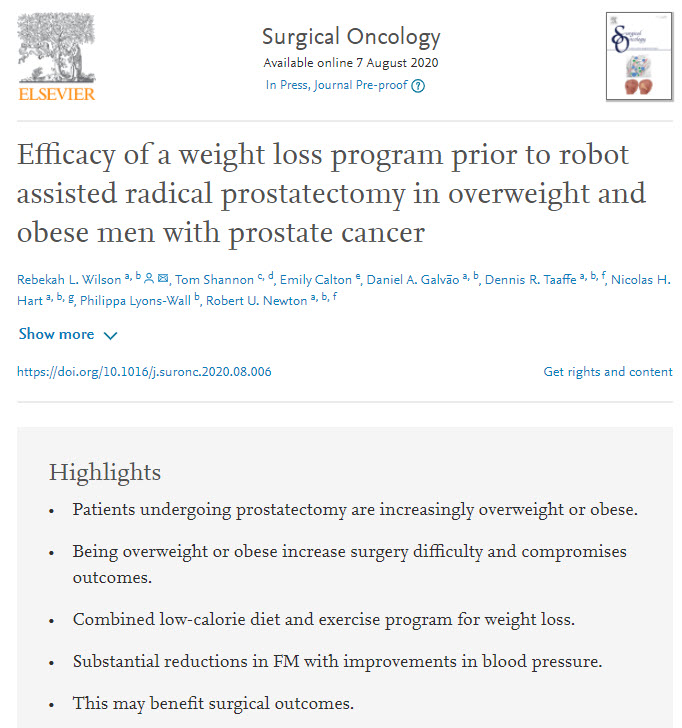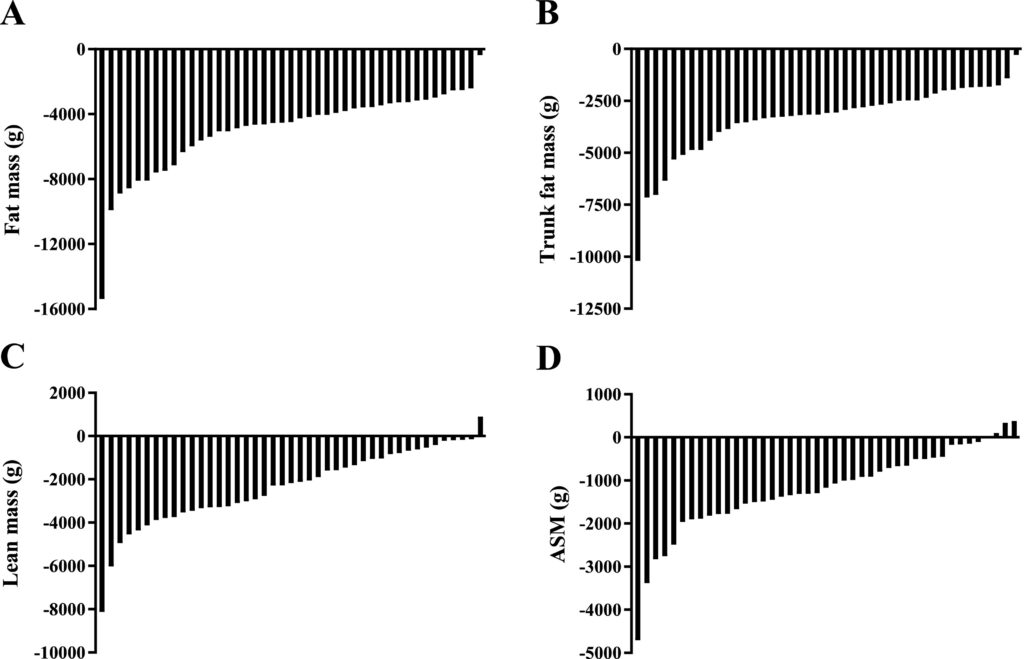Efficacy of a weight loss program prior to robot assisted radical prostatectomy in overweight and obese men with prostate cancer
Background
Obesity in prostate cancer patients is associated with poor prostate-cancer specific outcomes. Exercise and nutrition can reduce fat mass; however, few studies have explored this as a combined pre-surgical intervention in clinical practice.
Purpose
This study examined the efficacy of a weight loss program for altering body composition in prostate cancer patients prior to robot assisted radical prostatectomy (RARP).
Methods
A retrospective analysis of 43 overweight and obese prostate cancer patients, aged 47–80 years, who completed a very low-calorie diet (∼3000–4000 kJ) combined with moderate-intensity exercise (90 min/day) prior to RARP. Whole body and regional fat mass (FM) and lean mass (LM) were assessed by dual-energy x-ray absorptiometry pre- and post-program. Body weight, waist circumference, and blood pressure were assessed weekly, with surgery-related adverse effects recorded at time of surgery and follow-up appointments.
Results
With a median of 29 days (IQR: 24–35days) on the program, patients significantly (p < 0.001) reduced weight (−7.3 ± 2.9 kg), FM (−5.0 ± 2.6 kg), percent body fat (−3.1 ± 2.5%), trunk FM (−3.4 ± 1.8 kg), LM (−2.4 ± 1.8 kg), and appendicular LM (−1.2 ± 1.0 kg). Lower weight, FM, percent FM, trunk FM, and visceral FM were associated with less surgery-related adverse effects (rs = 0.335 to 0.468, p < 0.010). Systolic and diastolic blood pressure were reduced (p < 0.001) by 15 ± 22 and 8 ± 10 mmHg, respectively over the weight loss intervention.
Conclusion
Undertaking a combined low-calorie diet and exercise program for weight loss in preparation for RARP resulted in substantial reductions in FM, with improvements in blood pressure, that may benefit surgical outcomes.



Leave A Comment
You must be logged in to post a comment.